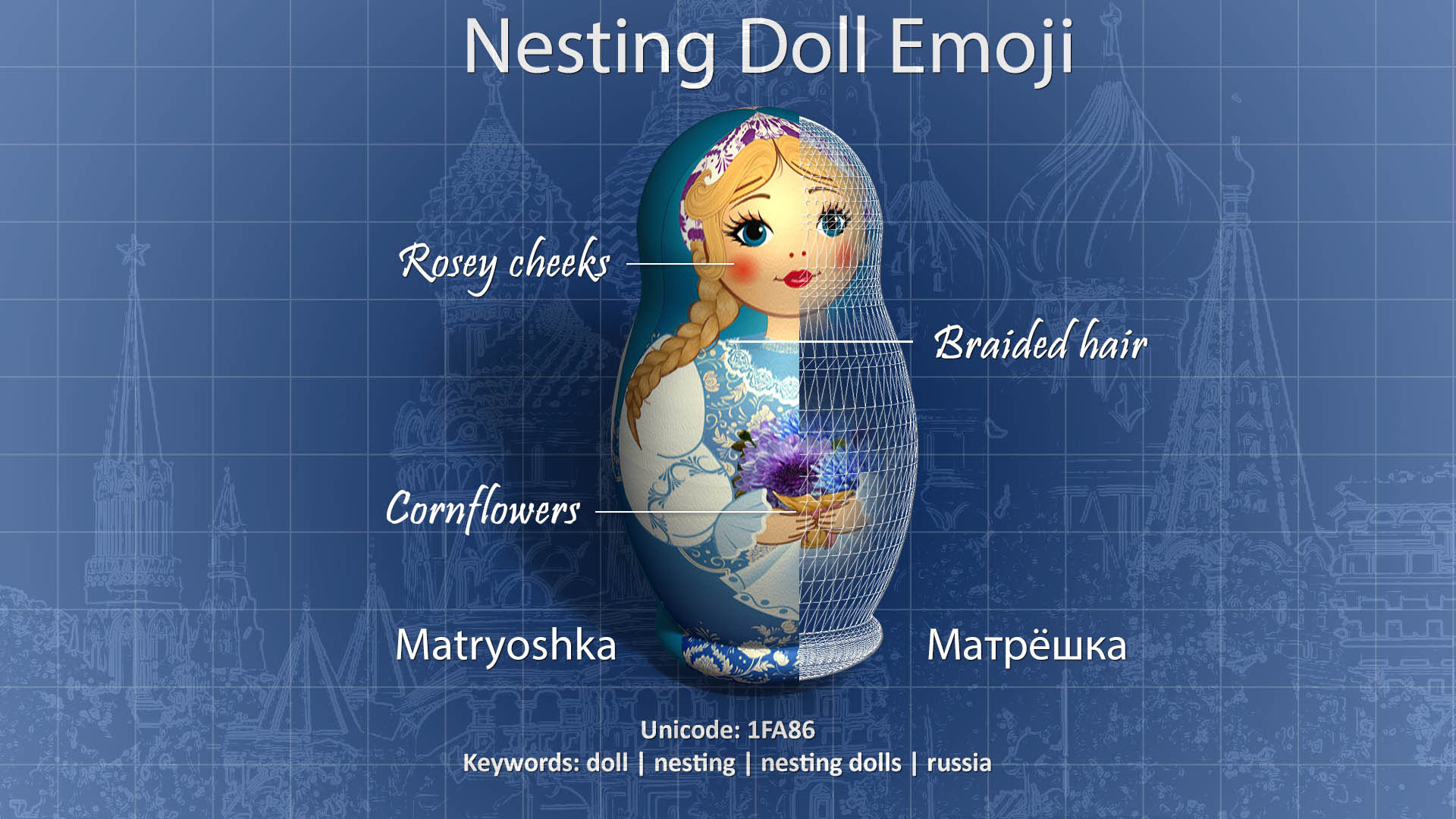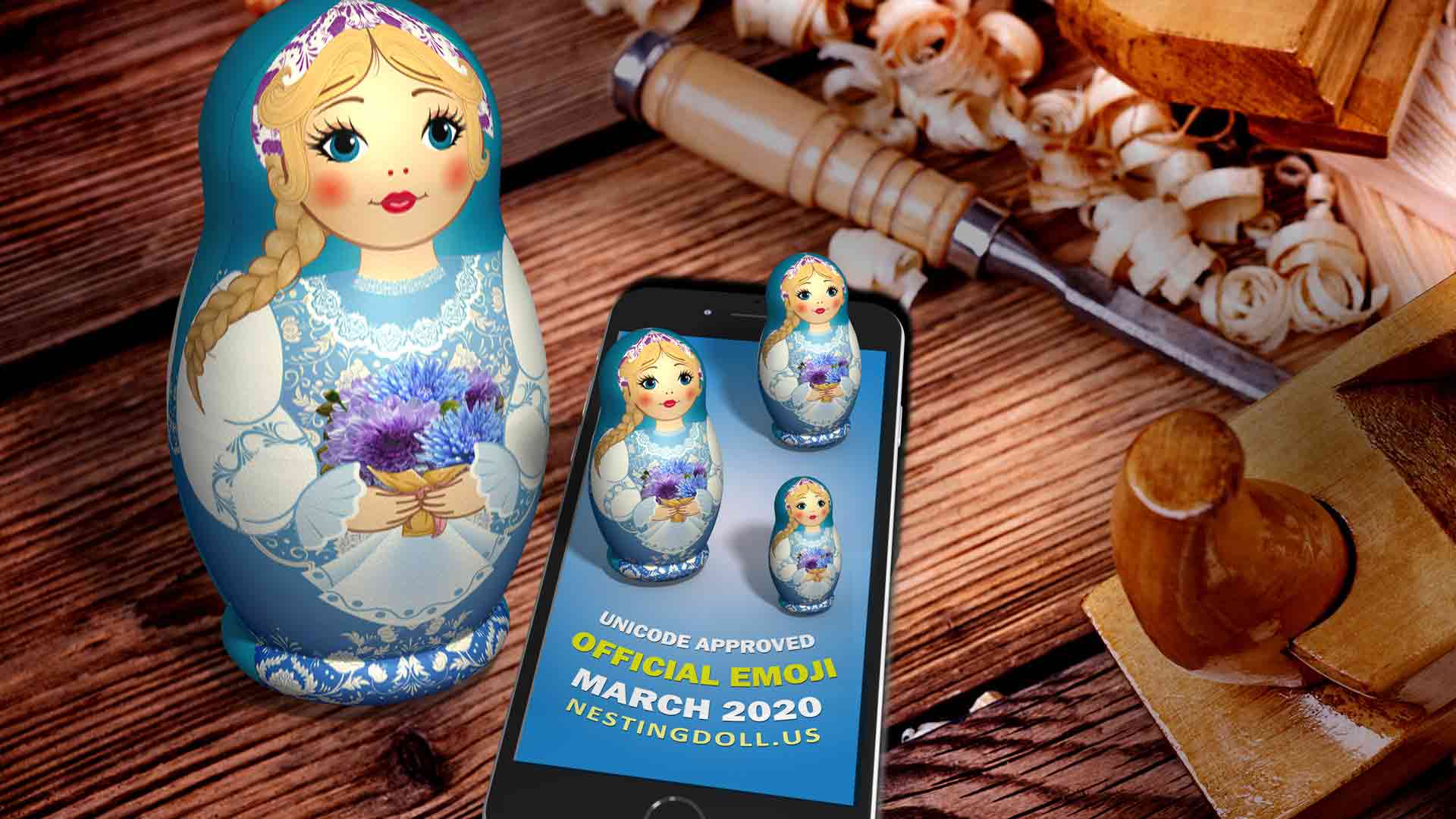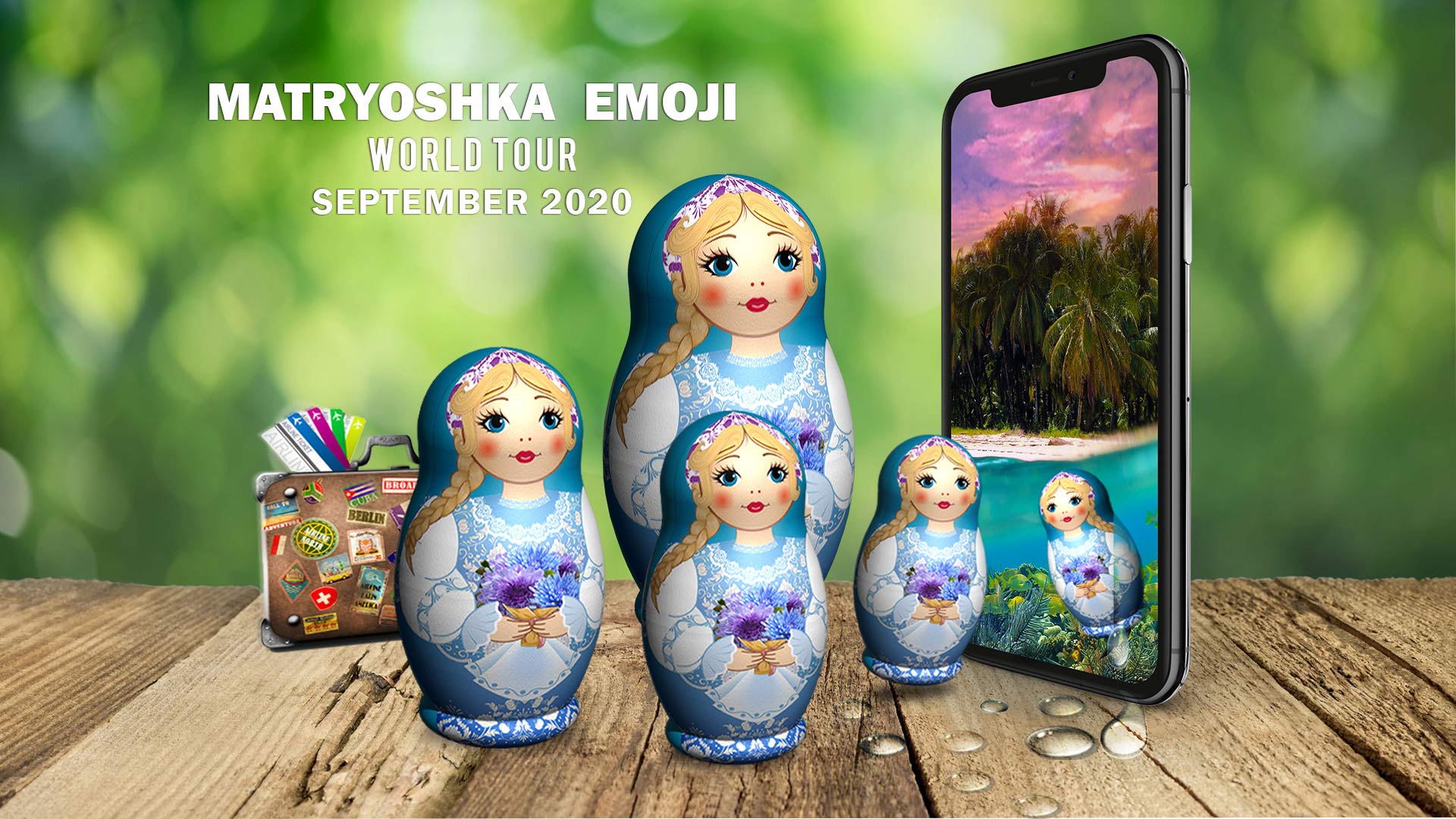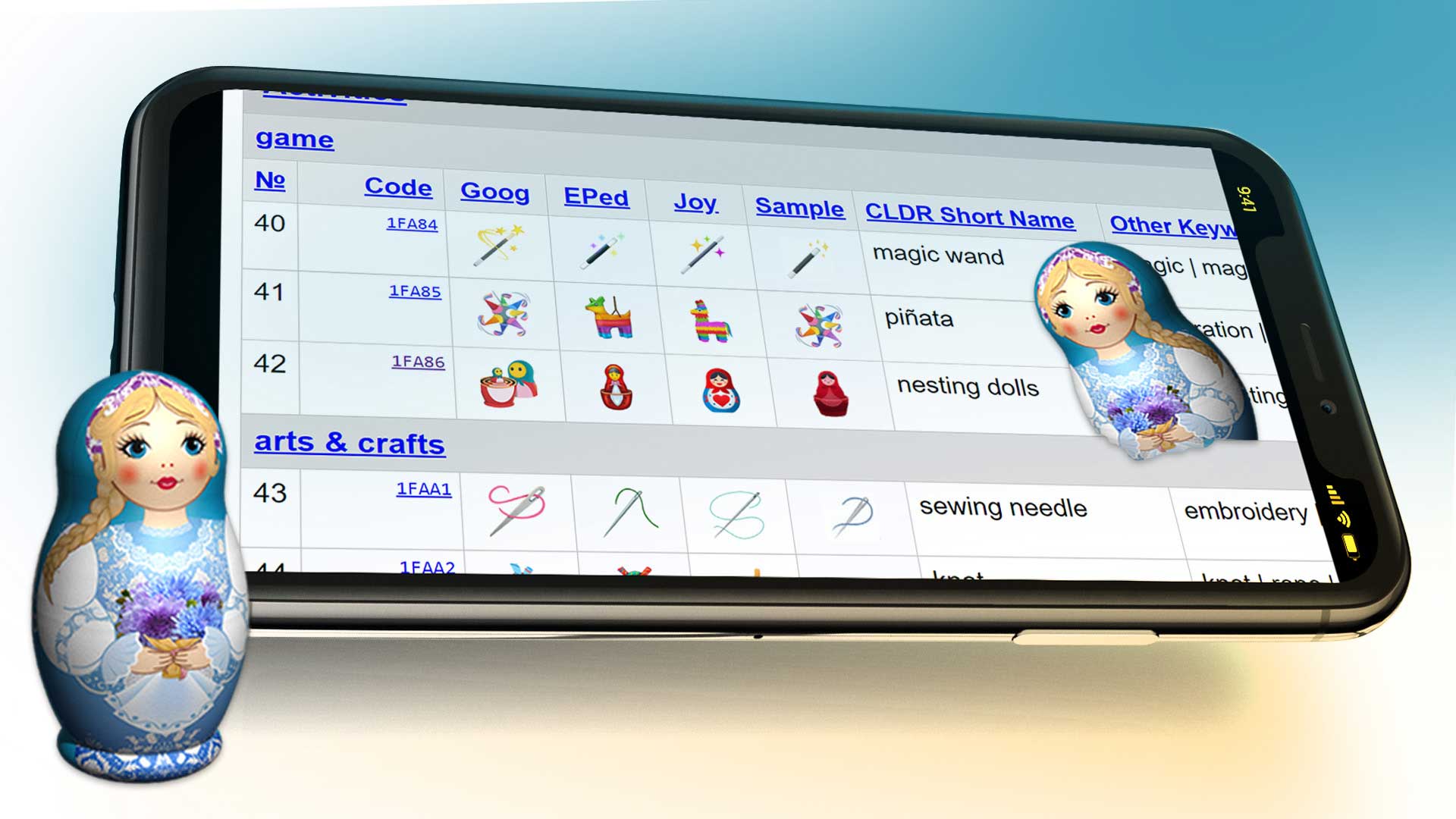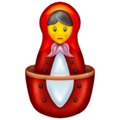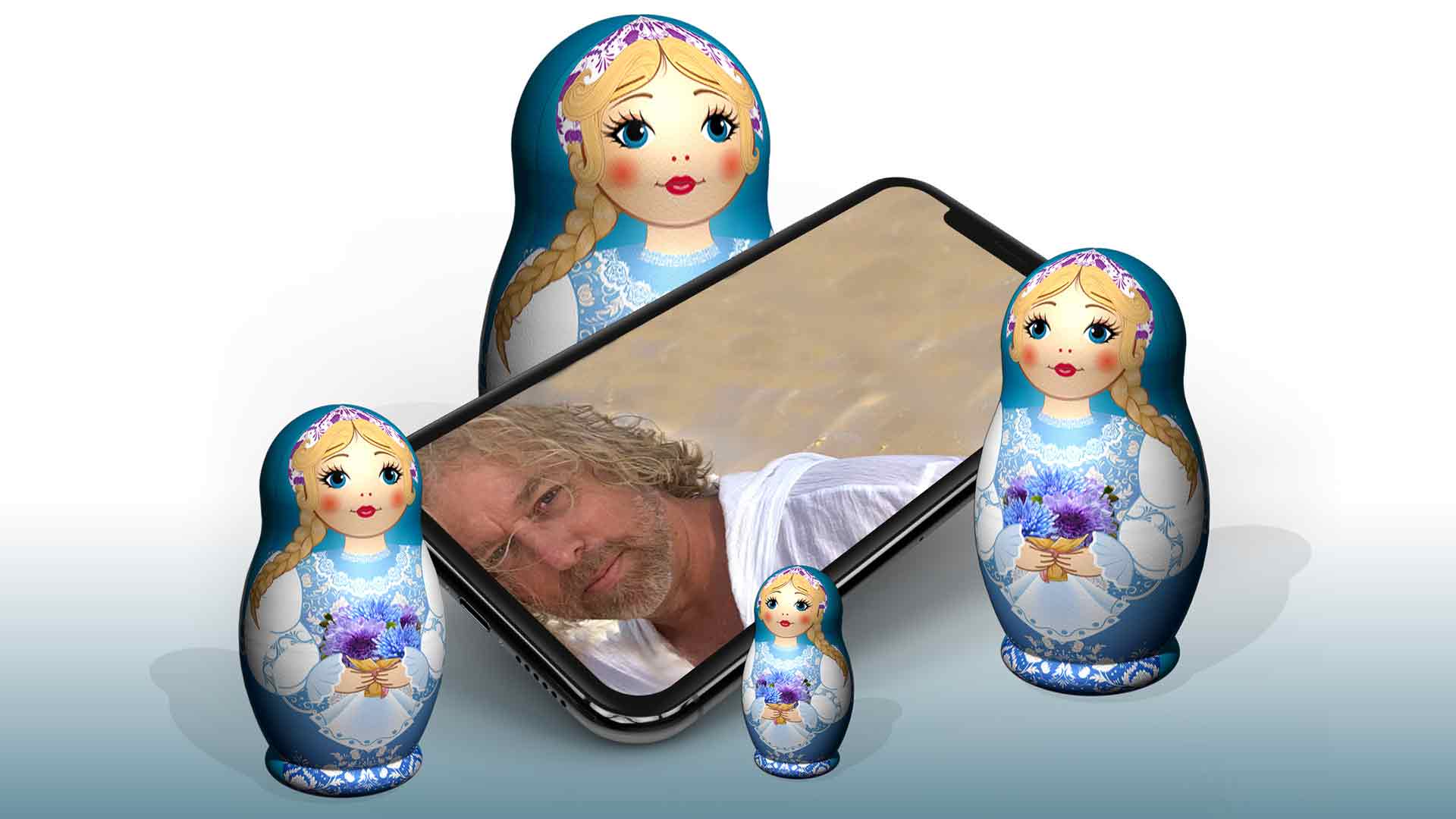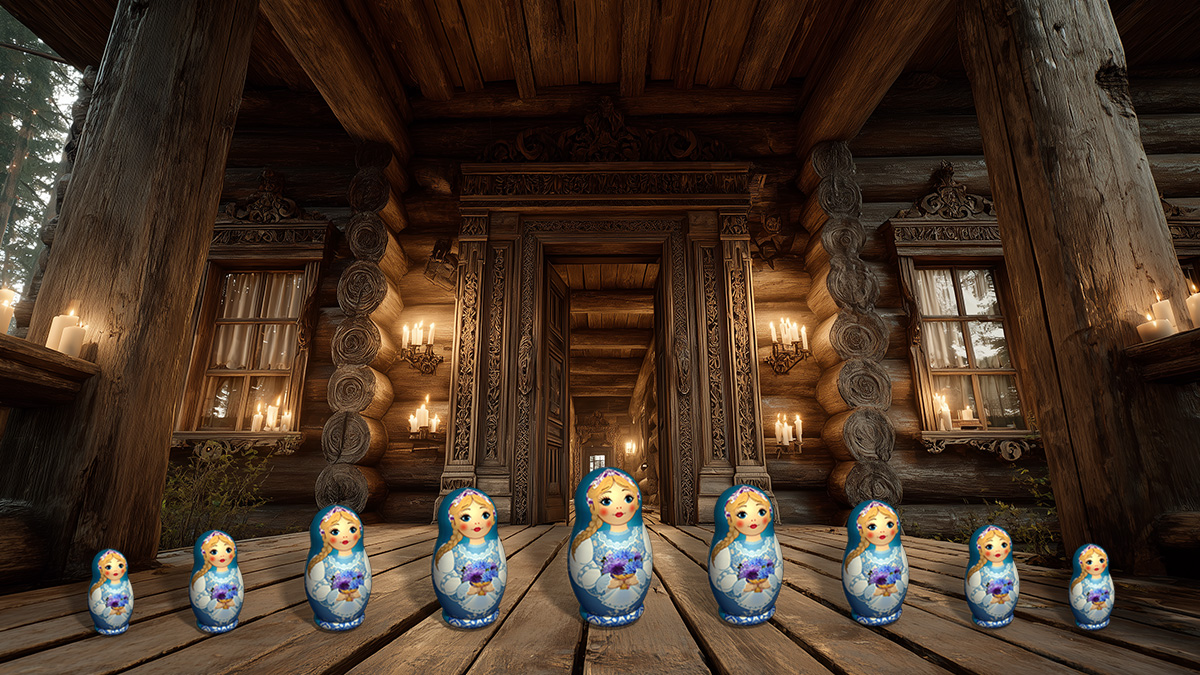Why Was the Nesting Doll Emoji Created?
The Need for a Matryoshka Emoji began on Twitter with a tweet that needed something extra…
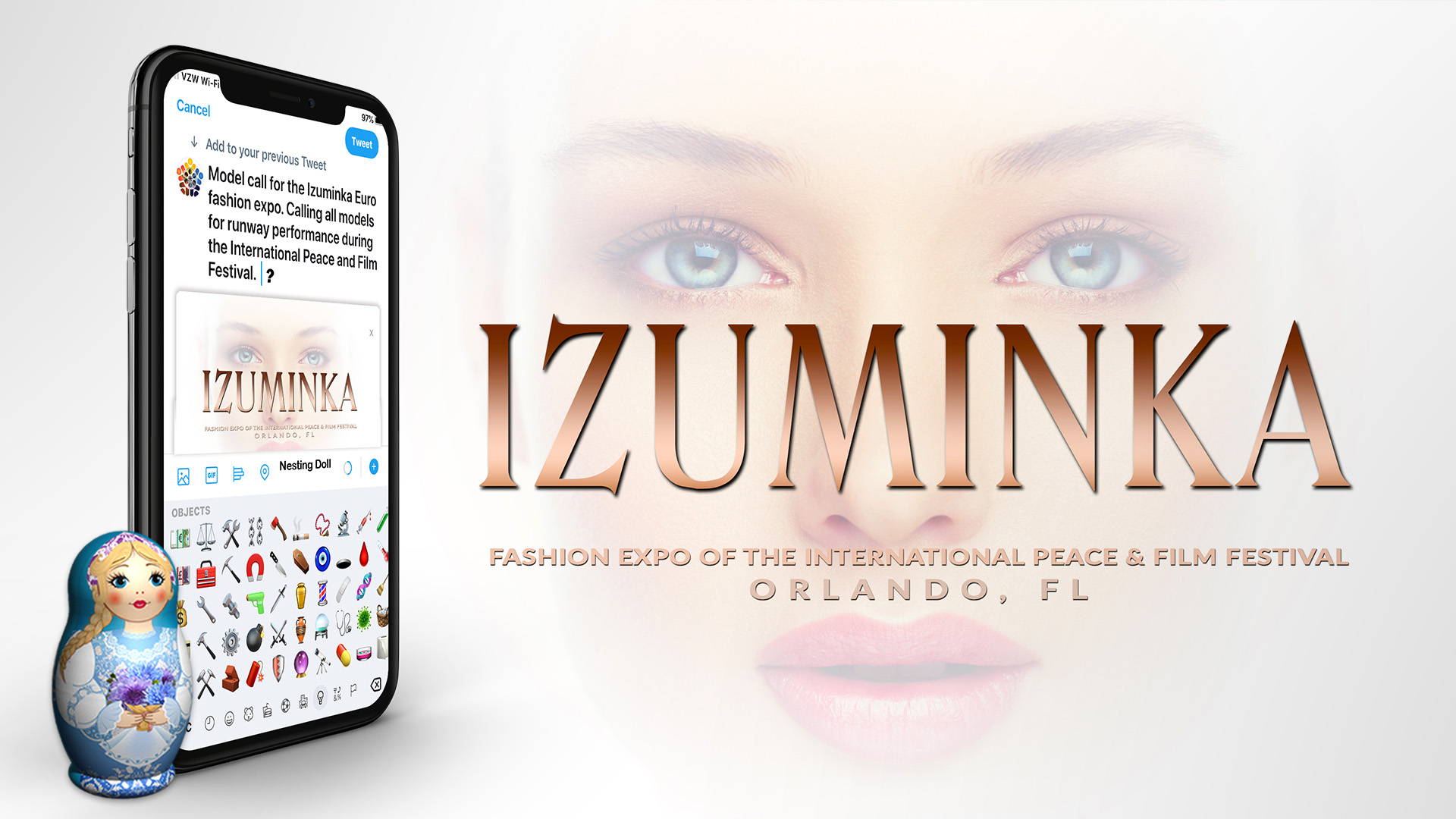
Around the beginning of September 2018, I was crafting a media post that needed to attract East European models. I was promoting a Euro fashion show called Izuminka and I thought a Matryoshka doll would be the perfect accent to get more impact. I started searching the emoji choices on Twitter and only saw a Russian flag or a ruble symbol.
"You mean that's it?" I thought.
"There are only two icons for the word Russia and they are about Russia the country, not necessarily people who speak Russian, or East European culture.
I couldn't find anything that reflected the wider use of the term Russian. And to my surprise, a Matryoshka doll did not exist as an emoji. Shocker.
I remember thinking, "Surely, someone, somewhere must has produced a balalaika symbol, a dome topped church, a nesting doll?"
The answer was No, at least not yet. I was in uncharted territory, and regardless of which web platform I searched, there was nothing: Apple, Android, Facebook, Twitter and Instagram...all have their own stylings of the standard emojis, but the same flag and ruble symbol were all that appeared.
So there I was, a developer and artist, thinking the solution was simple. I would create a matryoshka emoji and upload it to a magical place on the Internet where emojis are born. Upon further research, I discovered that such a place does not exist. However, there is a process, loaded with steps and protocols, where an idea for an emoji can be submitted. It is called the Unicode Consortium (UC).
The Unicode Consortium
The UC is made up of the 'who's who' in tech elite companies like Facebook, Google, Netflix, Microsoft, Apple, Intel, and more. Their approval decisions become part of the new worldwide releases on mobile devices, social media and keyboard mapping. As you can imagine, they have a lengthy, detailed vetting process, where only a few submissions are awarded each year. It looked like an extreme 'long shot' to get approved, but I was undaunted. I knew the odds were not in my favor, but I thought, "Better to fail by trying than by giving up."
Down the rabbit hole I went, I scoured the consortium website, downloaded the application criteria and went to work. There are some interesting things you can learn during this process.
First, the UC takes these iconic images very seriously. If you want to introduce something that already exists, you'll be shot down immediately. For example a concept such as a blue horse, as opposed to a red horse, or yet another grimace on a smiley face...[Buzzer Sound]--your application will be denied. Second, the concept for the emoji has to have recognition and relevance. Fads, memes, or gimmicks that fade over time are not considered worthy of consideration. And you're expected to submit proof of this from search trends and research spanning a wide period of time.

Above image: Stages of the nesting doll prototype.
In the case of the Matryoshka, there was over 100 years of data to support the concept of recognition and ongoing relevance.
In both cases, my concept fit the criteria. It was not already represented in the emoji universe, and it was not a passing fad. My justification for approval was that East Europeans need a recognizable symbol that reflects their history and culture. And the most appropriate symbol was the Matryoshka Doll.
Why a Matryoshka Doll Represents East Europeans
First off, I've spent many years working in the Russian speaking community through the International Peace & Film Festival. I've learned that the term "Russian", is very broad, and in the post-soviet sense it includes all the countries of the Former Soviet Union where the Russian language was a requirement for over 70 years. But "Russian" is more than that, during the Soviet era, citizens were sent where they were needed, making movement between countries a normal part of life.
Families often had parents born in one country and children born elsewhere, although still within the FSU. This meant a blending of cultures existed across that part of the world for almost a century, and to this day, the Matryoshka is recognized as being from Eastern Europe. [Some might argue that the doll is only Russian. I'm not disputing the roots of the object, only illustrating how recognition of it migrated over time].
Secondly, the traditions, culture and heritage of those moving within the FSU were often carried from one place to another. There are strong similarities in how all former FSU countries celebrate holidays such as: New Year, Woman's Day (March 8th), Victory Day, Veteran's Day, Day of Children and numerous other annual events.
Thirdly, when you try to capture this incredibly large population of expats in a message or post on social media, you'll find that a national flag, or two, or five, isn't always the right way to express your message. Another issue: the FSU countries are very diverse in terms of religion, with some religions more dominant in one country than another. How could someone wishing to post a message about East European people or culture do so without isolating the dynamics of any particular religion?
Taking all of that into account, I proposed this solution to the UC: The Matryoshka doll was a non political, non religious, easily recognized and popular symbol that could represent Eastern European culture in emoji form. I then drew up some samples and presented my research to validate the above points.
